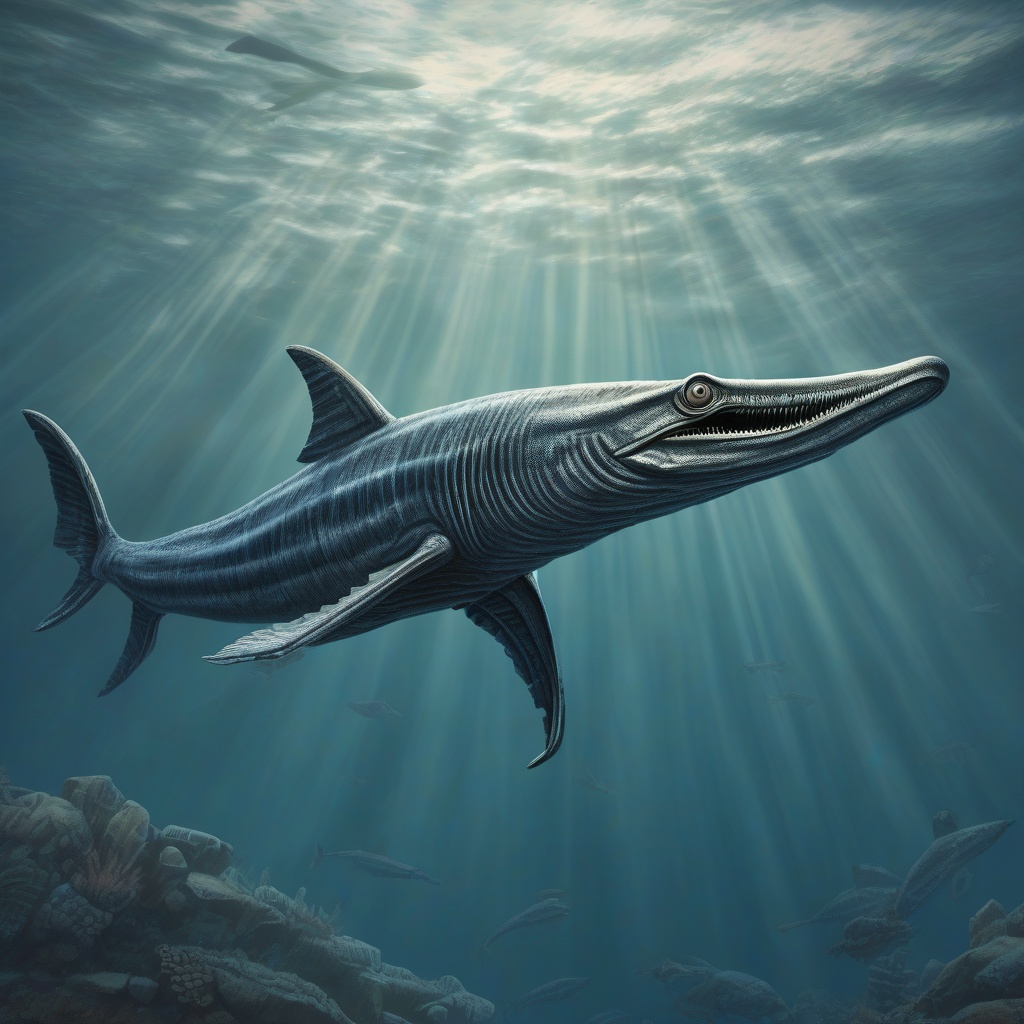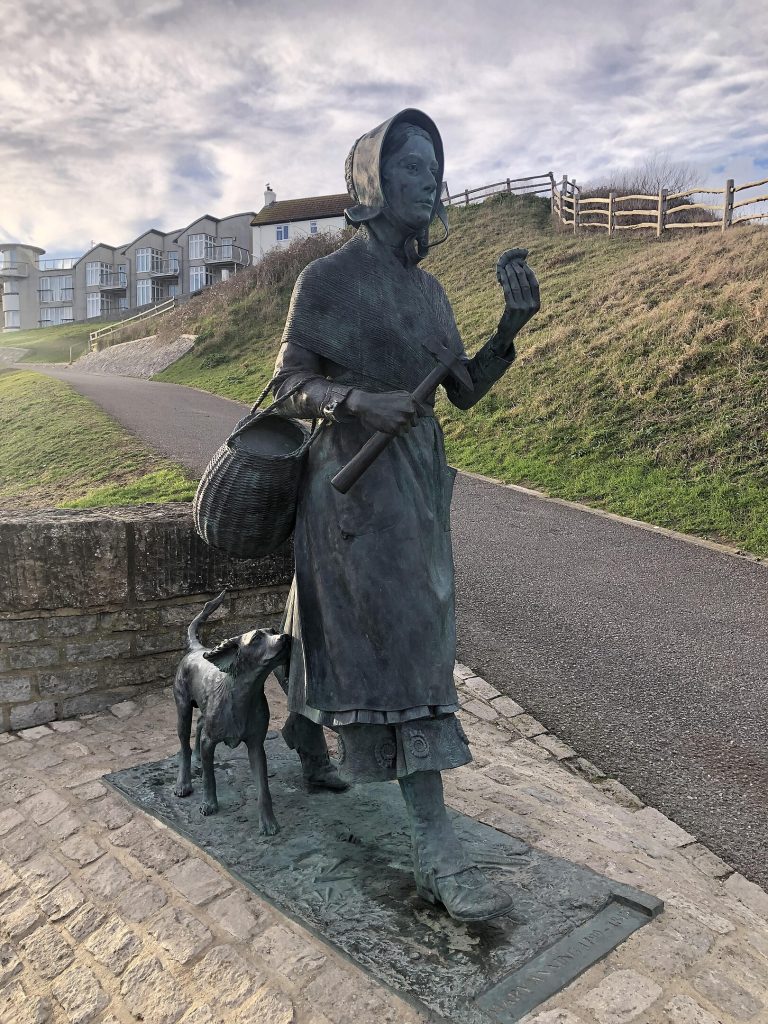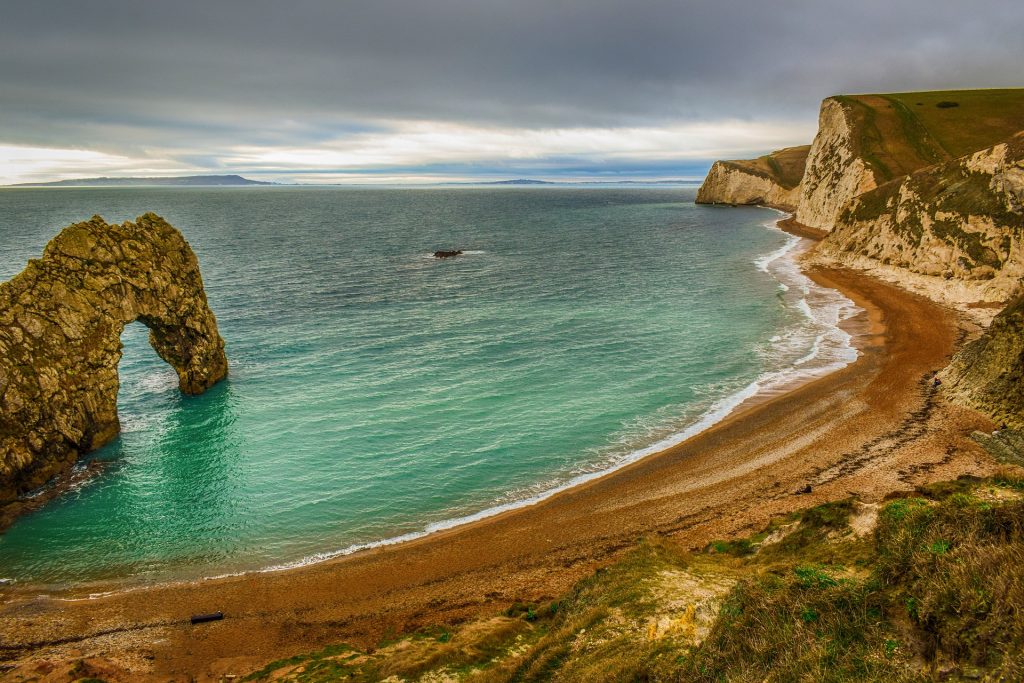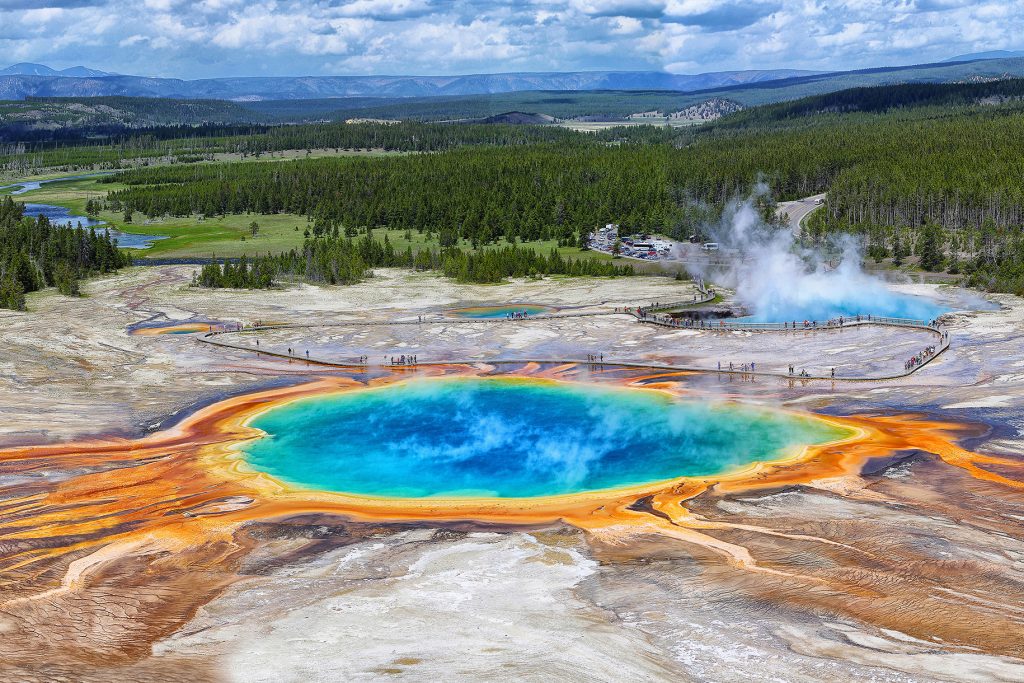Imagine yourself strolling along the beaches of Lyme Regis in 1824. Beside you strolled a woman by the name of Mary Anning. The stroll has all the hallmarks of an uneventfully pleasant morning walk, but Anning spots something protruding from the soft mudstone cliffs. It appears to be nothing more than a piece of rock but to her well trained eyes, it represented the find of a lifetime. It would come to define the beach, and the region for centuries to come. Anning had discovered the fossilized remains of a large, carnivorous dinosaur now known as the Scelidosaurus. Let’s explore the Jurassic coast!
The Jurassic Coast of England is usually considered to start at Orcombe point in the west, stretch for 95 miles along the beautiful coastlines of Devon and Dorset before terminating at Old Harry Rocks in the far east. In 2001 it was recognised as a UNESCO World Heritage site renowned for its exceptional examples of geological formations.
Geology through time
Despite being called the Jurassic coast, its rock formations span the Triassic, Jurassic, and Cretaceous periods. These rock layers provide an almost continuous record of the Mesozoic Era, spanning approximately 185 million years of geological time. The geology of the coast is complex and varied, featuring a range of rock types and formations that have been shaped by millions of years of natural processes.
The Triassic period, which dates from 252 to 201 million years ago, is represented by the red sandstones and mudstones found around the East Devon coast. These rocks formed in arid desert conditions and are often rich in fossilized remains of early reptiles and amphibians. During this time, the globe would look very different to today. The supercontinent of Pangea was still a single land mass. During the Jurassic period, this small corner of Devon was on the edge of a small inland sea. The climate at the time was much hotter and drier than the present. The single solitary landmass did, however, give rise to far greater seasonal variations in temperature and weather than the present day.
As you move east along the coast, you progress into the Jurassic period, from which the region gets its name. These rocks date from about 201 to 145 million years ago. By the Jurassic, the supercontinent of Pangea had broken up into several smaller, but still super, continents. This area was on a continent called Gondwana. The area was now entirely submerged in shallow sea and as a result there is an abundance of marine fossils, including ammonites, belemnites, and marine reptiles such as ichthyosaurs and plesiosaurs. This period is best represented by the limestone and shale cliffs of Dorset.

The Cretaceous period, dating from about 145 to 66 million years ago, is represented by the chalk cliffs found around the Isle of Purbeck and parts of East Devon. These rocks were also formed in warm, shallow seas so show the same abundance of fossilized sealife. This area also shows the beginnings in the fossil records of early birds and small mammals.
Key sites to the Jurassic Coast
The Jurassic Coast is dotted with numerous geological landmarks, each offering unique insights into Earth’s history.
Lyme Regis
Known as the “Pearl of Dorset,” the seaside town of Lyme Regis is famous for its fossil-rich beaches and cliffs. Lyme Regis has been a significant port and fishing village since medieval times. The town’s history is intertwined with maritime activities, and it has a charming mix of historic buildings and narrow streets. The Lyme Regis Museum offers insights into the town’s geological and cultural history, with exhibits on Mary Anning and her fossil discoveries.
The town has a long history of fossil hunting, with notable figures like our very own Mary Anning having made significant discoveries here. The cliffs around Lyme Regis are part of the Blue Lias formation, which is characterised by interspersed layers of shale and clay. The formation covers a wide area of southern and central England, stretching as far north as Warwickshire. The richness of the finds in Lyme Regis as compared to elsewhere in the formation is thanks in no small part to the relentless wearing of the cliffs by the sea, exposing fresh shale on a regular basis. The formation dates back to the early Jurassic period and is rich in ammonites and marine reptile fossils. Fossils such as Ichthyosaurs and Plesiosaurs have been found along with an abundance of amonites and Belemnites in the cliffs of Lyme Regis

Chesil Beach
No tour of the Jurassic coast would be complete without a stop at Chesil Beach. It is a remarkable 18-mile-long shingle spit that stretches from West Bay to the Isle of Portland. This natural feature is an excellent example of the process of longshore drift, where sediments are transported along the coast by wave action. The beach is also a natural barrier, creating the Fleet Lagoon to its inland side, a unique habitat for wildlife.
At the far end of the beach lies the Isle of Portland. Known for its high-quality, bright white limestone, which has been quarried for centuries and used in notable buildings such as St. Paul’s Cathedral in London. The island’s history is rich with tales of shipwrecks, smugglers, and military fortifications, including the remains of Portland Castle, built by Henry VIII. Portland was the site of beautifully preserved specimens of Dapedium, a large fish with an armoured body.
Durdle Door
One of the most iconic landmarks on the Jurassic Coast, Durdle Door is a natural limestone arch near Lulworth in Dorset. The arch was formed by the erosive power of the sea, which has gradually worn away the softer rock around the harder limestone, creating this stunning feature.
The formation is ripe with local folklaw from the legend of the sea serpent, the story of the star crossed lovers, the fisherman and the mermaid or the giants gateway. Durdles door was also a haven for smugglers. The natural arch and surrounding cliffs providing excellent protections from prying eyes. One such smuggler was a notorious Captain Jack. he would light lanterns on the arch to guide ships safely into the coves for his motley crew to unload everything from brandy to tobacco.
There is also a legend that attributes magical healing properties to the waters around Durdle Door. According to the story, a local healer named Elowen discovered a hidden spring near the arch, whose waters could cure ailments and bring relief to the sick. People from nearby villages would travel to Durdle Door to bathe in the waters and drink from the spring, believing in its miraculous powers. Alas the spring is now lost to time, so there is no way of verifying whether Elowen’s sprint really did have healing powers.

Old Harry Rocks
Located at the eastern end of the Jurassic Coast, the rocks are part of the Purbeck isle and lie between the towns of Studland and Swanage. They consist of three chalk formations: Old Harry, Old Harry’s Wife (which collapsed in 1896), and a series of smaller stacks and stumps, remnants of a once-continuous chalk ridge. The rocks were formed beneath a shallow sea, 66 million years ago at the tail end of the Cretaceous period.
Some say the name ‘old Harry’ is thought to refer to the devil, believing it refers the resting place of the devil, or perhaps a snare the devil used to lure sailors to their deaths. Others say that the name comes from a notorious pirate named Harry Paye who operated in the 14th and 15th century. What is clear is that the rocks have been named as such for at least 500 years.
The Jurassic Coast Path
Snaking along the cliffs and beaches of the entirety of the Jurassic coast is The South West Coast Path. For the more adventurous types, this long-distance footpath allows walkers to experience the diverse landscapes and heritage of the area at ground level. The path also offers stunning views and access to many of the lesser visited sites such as the peak of Golden Cap, the highest point on the south coast.
Environmental and Conservation Efforts
The natural beauty and geological significance of the Jurassic Coast make it a vital area for conservation. Efforts are underway to preserve the unique landscape and biodiversity of the region while continuing to accommodate tourism and educational activities.
Coastal Erosion Management
The soft cliffs along the Jurassic Coast are constantly being eroded by the sea, a natural process that also contributes to the exposure of new fossils. Managing this erosion while protecting property and infrastructure is a delicate balance. Local authorities and conservation groups work together to monitor and manage the impact of coastal erosion.
Habitat Conservation
The Jurassic Coast is home to a variety of habitats, from rocky shores and sandy beaches to cliffs and grasslands. These habitats support a diverse range of wildlife, including rare and endangered species. Species such as the Greater Horseshoe Bat, the Smooth Snake, Sand Lizard and Marsh Fritillary butterfly are all threatened by habitat loss. The White-Clawed Crayfish is threatened by the invasive North American Signal Crayfish. While the Common Tern, Grey Seal and European Eel are all threatened by human activities such as recreation, or overfishing. Conservation efforts focus on protecting these habitats through measures such as habitat restoration, invasive species control, and sustainable tourism practices.
Future Challenges and Opportunities
The Jurassic Coast faces several challenges that require ongoing attention and action. Climate change, coastal erosion, and increasing tourism pressure are among the key issues that need to be addressed.
Climate Change
Rising sea levels and increased storm frequency due to climate change pose a significant threat to the Jurassic Coast. These changes can accelerate coastal erosion and impact the delicate balance of the region’s ecosystems. Adaptation strategies, such as reinforcing vulnerable areas and planning for sea-level rise, are essential to mitigate these impacts.

What does the future hold?
The Jurassic Coast faces several challenges that require ongoing attention and action. Climate change, coastal erosion, and increasing tourism pressure are among the key issues that need to be addressed.
Climate Change
Rising sea levels and increased storm frequency due to climate change pose a significant threat to the Jurassic Coast. These changes can accelerate coastal erosion and impact the delicate balance of the region’s ecosystems. Adaptation strategies, such as reinforcing vulnerable areas and planning for sea-level rise, are essential to mitigate these impacts.
Managing Tourism
The popularity of the Jurassic Coast as a tourist destination brings economic benefits but also puts pressure on the natural environment and local infrastructure. Managing this influx sustainably is crucial to preserving the area’s unique qualities. This includes developing infrastructure that can handle peak visitor numbers, promoting off-peak tourism, and encouraging responsible behaviour among tourists.
Community Involvement
Local communities play a vital role in the conservation and management of the Jurassic Coast. Engaging residents in conservation efforts, promoting local businesses, and supporting community-led initiatives can help ensure that the benefits of tourism are shared and that local voices are heard in decision-making processes.
Research and Monitoring
Ongoing research and monitoring are essential to understanding the changing dynamics of the Jurassic Coast. This includes studying the rates and patterns of coastal erosion, the impacts of climate change, and the health of local ecosystems. Research findings can inform conservation strategies and help anticipate future challenges.
Technological Innovations
Advances in technology offer new opportunities for managing and preserving the Jurassic Coast. Geologists from South Wales university are embarking on a mission to map the cliffs of the Jurassic coast using drone technology. They are using a combination of a real-time Kinematic base station, geo-reference points and high powered cameras to create detailed 3D models of cliff faces up and down the coast. The project is focussing on the soft shale cliffs at Lyme Regis to provide data on structural integrity, the limestone cliffs at Portland to offer insights into the commercial opportunities of further quarrying and the sandstone cliffs of Osmintgon mills and West Bay to understand sedimentary patterns.
Final Thoughts
The Jurassic Coast of Dorset and Devon is a geological treasure trove and a region of outstanding natural beauty. Its cliffs, beaches, and rock formations tell the story of Earth’s history over 185 million years, offering invaluable insights into the processes that have shaped our planet.
While the region faces challenges from climate change, coastal erosion, and tourism pressures, it also presents opportunities for sustainable development, conservation, and education. By balancing the needs of visitors with the imperative to protect and preserve this unique landscape, the Jurassic Coast can continue to inspire and educate future generations.
Through collaborative efforts involving local communities, governments, conservation organizations, and visitors, the Jurassic Coast can be safeguarded for the future. Its rich geological and cultural heritage, coupled with its stunning natural beauty, makes it a truly special place that deserves careful stewardship and appreciation.


